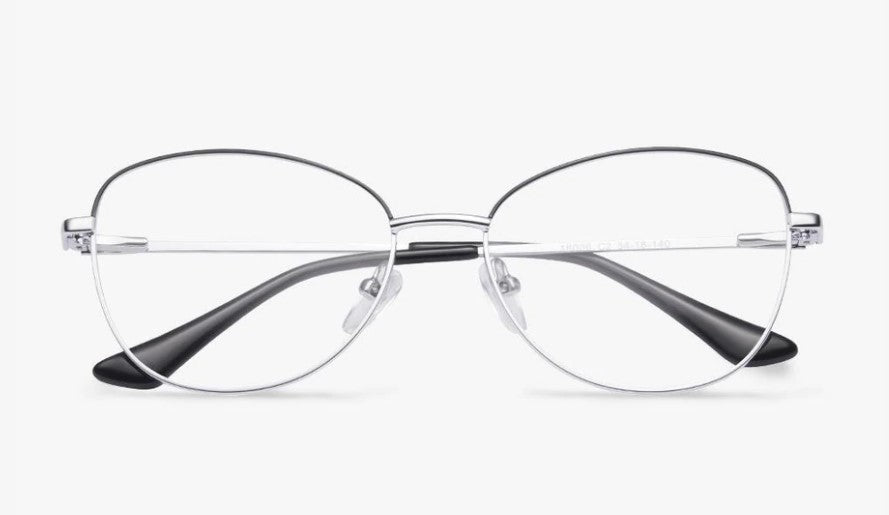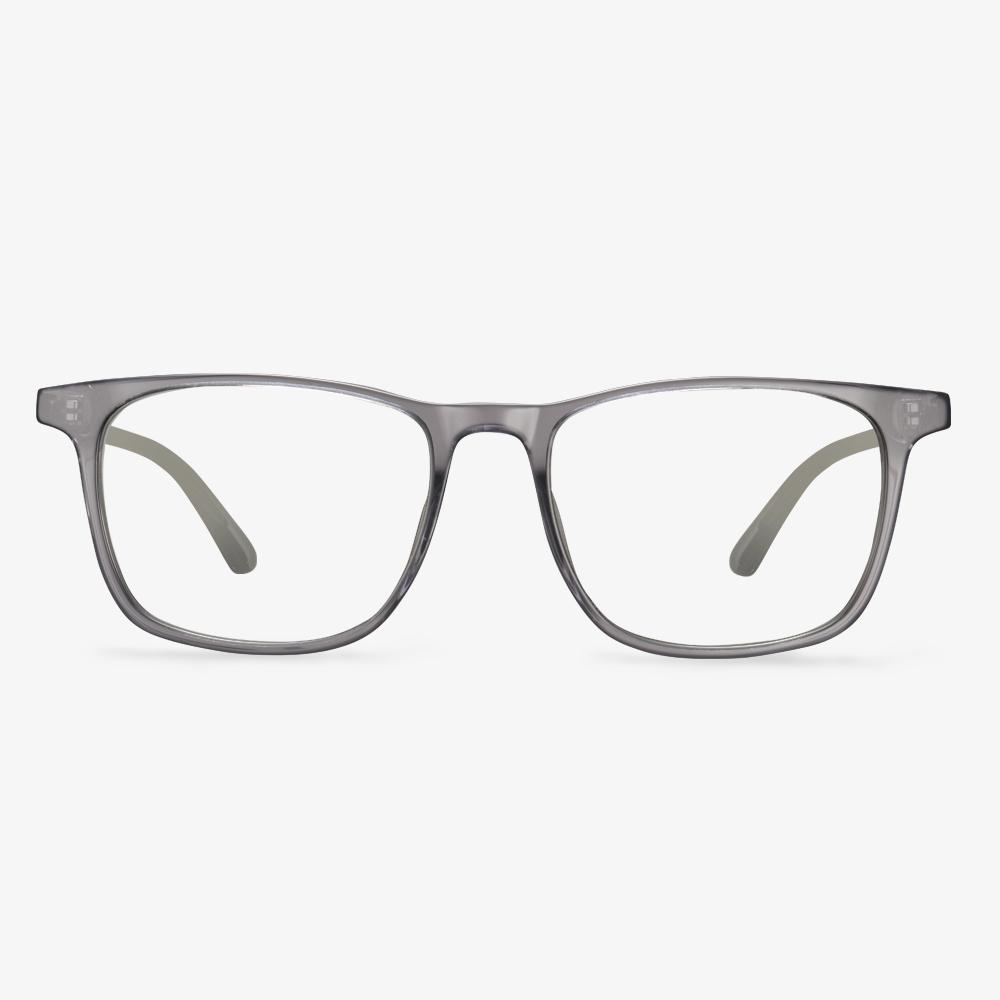Two Tone Cat Eye Glasses
Cat eye glasses, the statement frame is the perfect finishing touch to elevate any outfit and playful cat-eye creates a fun, polish look. The two tone cat eye glasses with silver and black finishes. The style often uses the same principles as Browlines, featuring a darker color on top, blending into a lighter silver color towards the bottom.
Two Tone Thick Frame Glasses
These two tone chick frame glasses are deliciously composed of two-toned acetate. The stylish oval lens frames feature a semi-transparent tortoiseshell finish melded with a creamy white. A classic keyhole nose bridge, two rivets stud accents, and comfortable spring hinges complete the concept of “wear in comfort, look in style”
Operation and Requirements of Drop Ball Test
The ball, which is 0.625 inches in diameter and weighs 0.56 ounces (16 grams), falls from 50 inches (127 centimeters) and hits the center of the lens. The geometrical center of the lens should be struck by the ball within a circle 5/8 inches in diameter. If the lens does not break, it is called a safety lens. There can't be anything that restricts the ball from falling. It cracks across the entire thickness, containing laminated layers (if any), and divides into two or more separate sections across the entire diameter.
Benefits of glasses with nose pads
Glasses with nose pads reduce the load on the bridge of the nose and make them more comfortable to wear. In addition, glasses with nose pads can have a non-slip effect, especially for people with a low nose bridge. It will be much more comfortable to choose glasses with nose pads, so there is no need to worry about the trouble of holding the glasses all the time.
Regular eye hospital examination
They must go to the formal professional ophthalmology for optometry and glasses. Wearing glasses after they suffer from myopia, is to correct refraction and clear view. Another important role is to prevent the loss of balance between the adjustment and aggregation functions of the eye. Before getting glasses, they need to go to the hospital for pupil dilation. Many parents are afraid that dilating pupil has a bad impact on their children's study, or afraid that dilating agents will affect the health of their children, so they ask their children to choose computer optometry for glasses. Failure to dilate the pupil and optometry will cause harm to the child's eyes.
Overnight Glasses
Overnight Glasses is created by experienced members of the optical industry. You'll get high-priced lenses, coatings, and prescription glasses approved by the FOOD and Drug Administration (FDA) and the American National Standards Institute (ANSI).
Production, inspection, and customer support are all done by certified opticians in the US with 100% accuracy. Freeform Progressives Lenses designed by Seiko, Transitions Lenses, Trivex Trilogy, Nu Polar Polarized films, even the most basic prescriptions for monopod lenses, are manufactured, assembled, and double-checked in the United States by their certified personnel. The inventory includes prescription glasses and prescription sunglasses from well-known brands such as Ray-Ban, Oakley, Dior, Versace, Salvatore Ferragamo, Dolce and Gabbana (D&G), Prada, Tom-Ford,Burberry Eyewear, and Ermenegildo Zegna are both priced at less than half what other retailers offer.
Basic principles of progressive lenses
The surface of the progressive slice is divided into five regions. There are far, middle, and near optical areas. They are respectively corresponding to see distant objects, middle distance objects in the near distance objects. One pair of glasses is multi-purpose. In appearance, it is not very different from regular lenses. There is no clear dividing line. Distal use area: The area above the progressive slice is the distal use area, which is used to correct the distal refractive error. Proximity area: from the matching lens cross down, the refractive power of the lens continuously increases the positive degree, which is used to see close objects. Gradient area: The channel connecting the far and near areas. It is an area of regular change from top to bottom, used for transitioning and seeing objects at intermediate distances. The length of the gradient is very important for the wearer's adaptation. The rate at which the degree of gradient changes is called gradient. The gradient can be uniform or variable. Peripheral area: Changes in the surface curvature of the lens will lead to aberrations in the peripheral areas on both sides of the lens, mainly astigmatism and prism effect, which will interfere with a vision to a certain extent, resulting in blurred vision or distortion. And it will affect the wearer's adaptation to the progressive lens.




















































